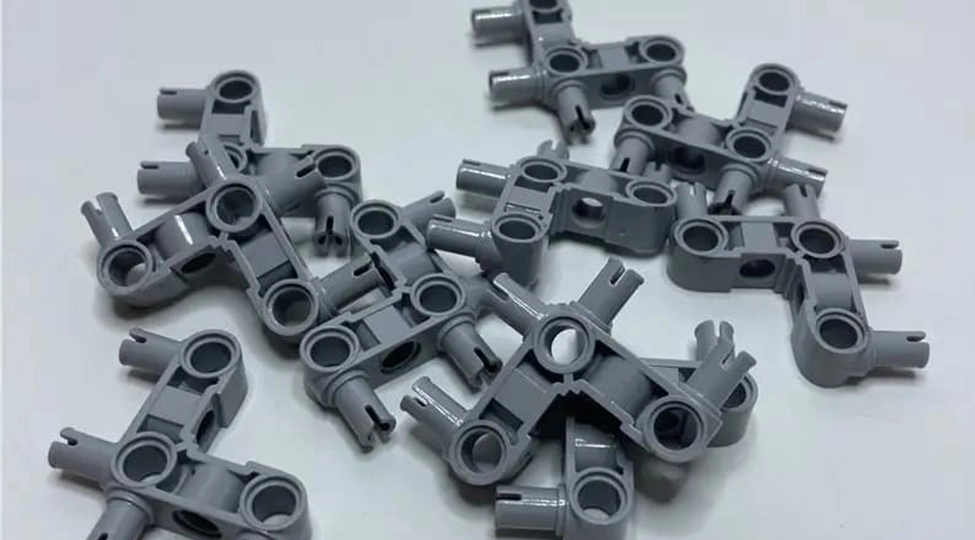




Flourish Legend's application in the field of robotics covers various areas, including intelligent robots in the manufacturing, medical, education, service, and agriculture industries for customized CNC machining processing of robot components. We continuously innovate to promote custom manufacturing of robot components, bringing greater convenience and innovation to our clients.

In the robotics industry, common materials for robot components include but are not limited to the following:
1. Metal Materials: such as aluminum alloy, stainless steel, steel, etc., used for manufacturing robot structures and parts, known for their high strength and stability.
2. Plastic Materials: such as CNC machining ABS, polyamide (CNC machining nylon), polypropylene, etc., used for robot casings, connectors, etc., known for their lightweight, wear resistance, and corrosion resistance.
3. Electronic Components: including various sensors (such as photoelectric sensors, proximity sensors, etc.), motors, controllers, etc., used for robot perception and control.
4. Rubber Materials: used for robot tires, seals, etc., known for their good elasticity and shock resistance.
5. Glass Fiber And Carbon Fiber: used for precision machining & manufacturing robot structures, known for their high strength and lightweight characteristics.
The selection of these materials depends on the specific purpose and requirements of the robot, as well as cost and performance considerations. Different material combinations can meet various robot functionalities and performance requirements.
CNC prototyping machining of robot components requires the following considerations: Firstly, material selection should match the function and requirements of the robot components to ensure quality and stable supply. Secondly, precise accuracy requirements for the components should be clear to ensure high precision and quality control during the machining process.
Furthermore, designs should be reasonable to ensure perfect integration of the robot components with the system. Adequate maintenance and care of the machinery and tools during the machining process are essential to ensure stability and longevity. Finally, rigorous quality inspection and testing are necessary to ensure that the robot components meet performance standards and safety requirements.
Rapid prototyping is widely used in the robotics industry because it offers a fast and cost-effective prototyping solution. Robot design and development involve multiple iterations and testing. Rapid prototyping allows engineers and designers to quickly validate design concepts, aiding in the rapid detection of issues and improvements. Moreover, rapid prototyping offers versatility in material usage, suitable for manufacturing various robot components such as structural parts, casings, and sensor brackets. Through rapid prototyping, the product development cycle can be accelerated, reducing development costs, thereby driving continuous innovation and application of robotics technology.
The core components of a robot include motors, sensors, controllers, actuators, and power supply. Motors drive the robot's movement, sensors perceive the environment and collect data, controllers process and execute commands, actuators perform the robot's actions, and the power supply provides energy for the robot.
The general manufacturing process for robots includes design, model production, CNC machining, assembly, and testing. The design phase establishes the robot's structure and functionality, model production employs techniques like hand board models or 3D printing for rapid prototyping, CNC machining is used to manufacture high-precision components, assembly integrates all parts into the robot, and finally, rigorous testing and debugging ensure the robot's performance and stability."

ISO International Quality Management System
Equipped with ISO 9001 certificate, we are able to support your OEM/ODM production.
Quality Control
We will check color, appearnce and tolerance by qulity control at every step during manufacturing process.
Low & High Volume Manufacturing
Besides high-volume production, we can also provide good solutions for your low-volume production (MOQ》1) with prototyping process.
Competitive Price
Our continuous investments in equipment and QC systems help us to get higher efficiency and quality which decrease reject ratio and increase market competitiveness in delivery qualified parts on time.
Reliability and Stability
Our 24 hours | 3 shifts production systems help your parts get into markets quickly and steadily.